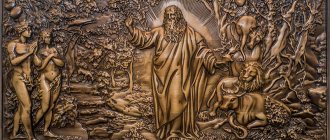Albigensian Wars
| Albigensian Crusade | ||
| Main conflict: Crusades | ||
| date | 1209—1229 | |
| Place | Languedoc, France | |
| Bottom line | Defeat of the Albigenses: Treaty of Paris | |
| Opponents | ||
|
| |
- Innocent III
- Honorius III
- Gregory IX
- Arnold Amalric
- Philip II Augustus
- Louis VIII
- Blanca of Castile
- Simon de Montfort
- Amaury VI de Montfort
|
The Albigensian Crusade or Cathar Crusade (1209–1229) was a series of military campaigns initiated by the Roman Catholic Church to eradicate the Cathar heresy in the Languedoc region.
When the diplomatic attempts of Pope Innocent III to influence the spread of the Cathar movement did not find much support among the clergy and large feudal nobility, he decided to resort to force of arms. At least a million people were killed during this 20-year crusade. The Albigensian Crusade played a decisive role in the establishment of the Dominican Order, as well as the Inquisition as a powerful means of combating dissent by the Catholic Church.
Origin
The Roman Catholic Church constantly dealt with various kinds of religious movements. However, in the 12th century, these groups united into small communities around preachers disloyal to the Pope or into small sects. The Cathars of the Languedoc region represented a fairly united religious movement of the kind that the Church had condemned for nine hundred years, since the time of Arianism.
In the 12th century, much of what is now called Southern France became imbued with the spirit of Catharism, which spread to other areas. Along with the Cathars, Waldensian communities arose in cities and towns controlled by the cities. Although the Cathar movement did not have its roots in Languedoc, it was there that their religious teachings found the most enthusiastic response.
This is a 15th century work by Pedro Berruguete. illustrates the legend of Saint Dominic and the Albigenses, in which the writings of Dominic and the Cathars were thrown into the fire in turn. The flames spared only Dominic's texts.
There were especially many Cathars on the southwestern coast of France, which by that time was under the rule of the Kingdom of Aragon. They called themselves Albigensians after the French town of Albi. Most researchers attribute this to the fact that Albi and the surrounding area had the highest concentration of Cathars. According to another version, this name goes back to the church council in Albi, which first declared the doctrines of the Cathars heretical. Political power in Languedoc belonged to large landowners and wealthy citizens.
Having become pope in 1198, Innocent III tried to return the Cathars to the fold of the Catholic Church. But numerous preachers were met rather coolly. Even Saint Dominic, distinguished by his persuasiveness and eloquence, failed to achieve anything significant. The Qatari leaders were actively helped by wealthy nobles, as well as some bishops who were dissatisfied with the church order. In 1204, the Pope removed these bishops from their positions and appointed a papal legate in their place. In 1206, he tried to find support from the aristocracy of Languedoc, pitting it against the Cathars. Nobles who continued to assist the Cathars were excommunicated. In May 1207, the powerful and influential Count Raymond VI of Toulouse was excommunicated. The Pope called on the French monarch Philip II to take decisive action against the Cathars, but he refused. Count Raymond met with the papal legate Pierre de Castelnau in January 1208, after which the pope's viceroy was found stabbed to death in his own bed.
The angry pope responded to the murder with a bull in which he promised to bestow the lands of the heretics of Languedoc on all who took part in the crusade. This further complicated the already difficult relations between the nobles of the North and South of France.
“Kill everyone, the Lord will recognize his own”
“For to die for Christ is not a sin, whether you kill or perish yourself, but a great and glorious virtue. If he kills a villain, then he does not commit murder, but, so to speak, murder.”
“If blessed are those who die in the Lord, how much more are those who die for Him?”
Bernard of Clairvaux, "In Praise of the New Knighthood"
“Arise and remember the deeds of your ancestors, the valor and glory of King Charlemagne, and his son Louis, and your other sovereigns, who destroyed the kingdoms of the pagans and expanded the boundaries of the holy church there. Let the holy Sepulcher of the Lord, our Savior’s Sepulcher, which is now in the possession of the wicked, and the holy places which are vilely desecrated by them and shamefully desecrated by their wickedness, encourage you. O mightiest knights! Remember the courage of your forefathers. Don't shame them!
<�…>
This land that you inhabit is squeezed from everywhere by the sea and mountain ranges, it is constrained by your numbers. It is not very rich and barely feeds those who work it. Because of this, you bite and devour each other, wage wars and inflict many mortal wounds on each other. Let the hatred between you cease, let the enmity cease, the wars subside and all sorts of strife and discord fall asleep. Start the path to the Holy Sepulcher, snatch this land from the wicked people, the land that was given by the Lord to our children of Israel and which, as the Scripture says, flows with milk and honey.
A 12th-century miniature depicting the departure of the Crusaders to the Holy Land. Source: wikipedia.org
Jerusalem is the navel of the earth, the most fruitful region compared to others, this land is like a second paradise. The Redeemer of the human race glorified her with his coming, adorned her with deeds, sanctified her with suffering, redeemed her with death, and immortalized her with burial. And this royal city, located in the middle of the earth, is now overrun by its enemies and is used by peoples who do not know the Lord for pagan rites. He strives for liberation and longs for liberation, he constantly prays for you to come to his rescue. He is waiting for help from you, for, as we have already said, before other existing nations you have been honored by God with remarkable strength of arms. Enter this path to atone for your sins, being filled with confidence in the unsullied glory of the Kingdom of Heaven.”
From the speech of Pope Urban II in Clermont
“Find, sons, the spirit of courage; take the shield of faith and the helmet of salvation and, strengthened not so much by numbers and strength, but rather by the spirit of our Lord, for whom it is not difficult to save us in both big and small, help to the best of your ability the one who gave you life and food. After all, He spent himself for you and, taking the form of a slave and becoming like a man in appearance and custom, bore obedience until his death, death on the cross! And you, who have prospered from His poverty, are inactive during His exile and do not come to the aid of the poor and persecuted!
Pope Urban II. Source: wikipedia.org
But the one who, under such necessity, refuses to obey Jesus Christ, what can he say in his own defense when he stands before His judgment? If the Lord suffered death for a person, will a person hesitate to accept death for the Lord, when mortal blessings are incommensurate with the future glory prepared for us? Will a servant deny his master temporary riches if the master gives the servant eternal riches, which no eye can see, no ear can hear, and which do not come to the human heart? For man lays up treasures in heaven, where they will not be dug up and stolen by thieves, and where decay will not cover them and the worm will not spoil them!
Let each and every one get down to business. By next March, let each city independently, as well as counts and barons, to the best of their ability, send to the defense of the land in which the Lord was born, a number of soldiers corresponding to their means, with a moratorium of at least two years.”
From the message of Pope Innocent III
Military campaigns
Occitania on the eve of the Albigensian Crusade (1209) Balance of forces and main battles
The military campaigns of the Albigensian Crusade can be divided into several periods. The first - from 1209 to 1215 - was accompanied by successes in Languedoc. The captured lands, however, were soon lost (1215-1225) due to uprisings.
The situation changed after King Louis VIII of France intervened in the war in 1226. After his death in November of the same year, the work begun was continued by his successor Louis IX. The region was re-conquered by 1229, and the local nobility agreed to a temporary truce.
After 1233, the Inquisition liquidated the remaining Cathars. Resistance and spontaneous uprisings continued, but without much success. Hostilities ceased only in 1255. During the Albigensian Wars, about a million people died (including casualties on both sides).
Successful start: 1209-1215
Main articles: Capture of Béziers, Siege of Carcassonne, Battle of Muret
In mid-1209, about 10,000 armed crusaders gathered in Lyon. In June, Raymond VI of Toulouse, suspecting something was wrong, promised the Catholic clergy to begin military action against the Cathars. Some time after this promise, his excommunication was lifted. Meanwhile, the crusaders approached Montpellier. The lands of Raymond-Roger Trancavel around Albi and Carcassonne, where the Cathar communities lived, were under threat of ruin. Like Raymond of Toulouse, Raymond-Roger tried to negotiate with the leaders of the crusaders, but he was refused a meeting, and he hurried back to Carcassonne to prepare the city for defense. In July, the crusaders captured the small village of Sevier and approached Beziers. They demanded that all Cathars leave the city. They refused, and after the capture of Beziers, its entire population was slaughtered, although there were no more than three hundred Qatari people in the city. Contemporary sources place the death toll at between seven and twenty thousand. The latter figure, probably greatly exaggerated, appears in the report of the papal legate Arnold Amalric. News of the disaster at Béziers spread quickly, and subsequently many Cathar fortifications surrendered without any resistance. It was during the capture of the Beziers fortress that the famous phrase “Kill everyone, God will recognize his own!” was allegedly said, which is attributed to the papal legate Arnold Amalric.
The Cathars are withdrawn from Carcassonne.
The next target was Carcassonne, which the crusaders approached on August 1, 1209. The city was an impregnable fortress. The siege was short-lived. On August 7, the city was cut off from the water supply, and on August 15, Raymond-Roger went to the enemy camp to seek a truce, but was captured. On the same day, Carcassonne surrendered without a fight. The population was not slaughtered, but, according to Peter from Vaux-de-Cerney, they were released from the city almost naked, “... in only shirts and trousers.” After the capture of Carcassone, the crusader troops were led by Simon de Montfort. Soon, Albi, Castres, Fange, Limoux, Lombert and Montreal were captured practically without resistance. However, some cities that had previously surrendered without a fight subsequently put up fierce resistance.
The next battle took place near Lastur, not far from the castle of Cabaret. In December 1209, Pierre Roger de Cabaret defended his fortress. Military operations temporarily ceased only with the first frosts. Bran fell in March 1210. In June, Minerva was besieged. The city was subjected to massive shelling from stone throwers, and it was captured only after the complete destruction of the defensive fortifications. The Cathars were given the opportunity to convert to Catholicism. Most did so, but 140 convinced Cathars were burned at the stake. In August, the crusaders approached Terme. Despite the considerable efforts of Pierre-Roger de Cabaret, the city was besieged and fell in December. In 1211, Lavore fell and about 500 people were brutally killed, including his mistress, Lady Herode de Lavore, and her brother Aimery de Montreal, who broke his oath to Montfort by rushing to help his sister. In 1213, the troops of Pedro II of Aragon came to the aid of Toulouse. They besieged the Muret fortress, but in September King Pedro II died in a battle with the crusaders. His defeated army fled. This was a serious blow to the Qatari resistance. At the end of 1213 the situation worsened: Raymond was forced to flee to England. In November, Simon de Montfort entered Périgord and easily captured the castles of Domme and Montfort, and also besieged Castelnau and destroyed the fortifications of Beynac. In 1215, the crusaders broke into Toulouse. Toulouse was transferred to Montfort. In 1224, his son Amalric ceded the lands he had inherited after his father's death in 1216 to the King of France. Nevertheless, there was no talk of the complete conquest of Languedoc. Many dissatisfied nobles, expelled from their lands, or having lost relatives, joined the ranks of the Faydites and began a guerrilla war against both the Catholic Church and Montfort, and in some periods achieved tangible successes.
Penitent Cathars wore a yellow cross
Rebellion and revenge of the southerners in 1216-1225
In April 1216, Raymond VI, together with his son, the future Raymond VII, returned from emigration to their lands and soon gathered a significant resistance army in the discontented cities. Beaucaire was besieged in May and fell three months later. The French garrison took refuge in the citadel; in June, Simon de Montfort came to the aid of the city, but was unable to recapture it and lifted the siege in August. Then he brutally suppressed the uprising in Toulouse. But in September 1217, Raymond VI, having gathered military forces, approached Toulouse, which immediately rebelled against the French again and happily opened the gates to him. Simon, who was in the Foix region, urgently returned and besieged the city, but on June 25, 1218, during the siege, he was killed by a direct hit to the head from a stone from a catapult. His son Amaury was forced to lift the siege.
Intervention of the French royal house
In November 1225, Raymond the Younger, like his father, was excommunicated. In June 1226, Louis VIII led a new campaign. Fortified cities and castles surrendered without resistance. Only Avignon resisted fiercely for more than three months before finally capitulating completely in September. Louis VIII died unexpectedly in November, leaving the young Louis IX on the throne. Blanca of Castile, the queen regent, appointed Humbert de Beaujeu as commander of the crusaders. In 1227, La Besède fell, and in 1228, Humbert besieged Toulouse, but was unable to take it and only ravaged the surrounding area. The Occitan forces had already exhausted themselves, and in 1229 Raymond VII was forced to sign a humiliating treaty at Meaux with the French crown.
"The Lord will distinguish his own..."
There are phrases that many have heard, but do not always remember - by whom, where and under what circumstances it was said. One of these phrases: “Kill everyone, the Lord will distinguish his own.” It was said by the papal legate Arnold Amalric, giving the order for the complete destruction of the population of the French town of Beziers. This happened during the Albigensian Wars in the 13th century.
The history of the struggle of the Catholic Church against the Albigensian heresy, which engulfed several regions of Europe in the 11th-13th centuries, is full of dramatic events. Catholics considered the Albigensians (or Cathars, as they were also called) the worst heretics and enemies of Christianity. Those, in turn, denied the right of the church to interpret the Bible and control people’s lives. Modern historians recognize that the Albigensians were very real competitors to Catholicism, and if events had turned out a little differently, they could well have created their own independent church. But for this they needed serious political support. They needed knights ready to defend their faith with arms in hand. Because neither the Pope nor the Catholic sovereigns wanted to tolerate any rivals in Europe. And they were ready to burn the center of heresy. And burn in the most literal sense of the word. One of the most irreconcilable fighters against heretics was the papal legate Arnold Amalric.
The "wrong" church
The Albigensian version of Christianity was quite different from the Catholic or Orthodox one to which we are accustomed. For example, they assumed the existence of good and evil as two equal principles. The Good God the Father, they believed, resides in his invisible blissful kingdom. And the world in which people live - evil, unjust and doomed to destruction - was created by the devil, a fallen angel. Naturally, Catholic theologians accused the Cathars of devil worship for such interpretations. And they, in turn, furiously scolded the Roman priests for their adherence to luxury and strict hierarchy. They called the Catholic Church “the synagogue of Satan” and believed that it had perverted everything that was written in the Bible. It is interesting, by the way, that the Cathars did not create new books for their teaching. They drew all their conclusions from the texts of the Old Testament and the Gospels, insisting that it was their teaching that was truly Christian.
One of the regions where the teachings of the Cathars flourished most magnificently was the south of modern France - the province of Languedoc, then under the rule of the Kingdom of Aragon. The Cathars were most supported by the powerful Count of Toulouse, Raymond VI. For this, Pope Innocent III excommunicated him in 1207, and then sent several legates (envoys) to the south to prevent Languedoc Catholics from falling into heresy. One of these legates was Arnold Amalric, a famous cleric who made a brilliant spiritual career in the Cistercian order and actually headed it in 1200.
Negotiations in Toulouse did not immediately go well. The papal envoys did not want to make any concessions and demanded from Count Raymond that he immediately eradicate heresy in his lands and generally carry out all the orders of the legates. The count, firstly, was not distinguished by an easy disposition, and secondly, he understood that if he began to carry out other people’s orders, he would lose part of his power over his lands. Matters very quickly escalated into conflict, and as a result, after another meeting with Count Raymond, one of the legates, whose name was Pierre de Castelnau, was found stabbed to death in his own bed. Whether Raymond of Toulouse was involved in this or not is not known for certain. But Arnold Amalric immediately declared him guilty of a crime and called on the pope to declare a Crusade against heretics. It didn’t take long to beg dad. So Arnold Amalric became the inspirer and one of the actual leaders of the first Crusade, organized by Christians against Christians.
Fatal words
Arnold acted extremely energetically and quickly. He appealed to all the feudal lords of Northern France with a demand to join the campaign. He imposed strict penance on those who, without a good reason, avoided participating in the war. They were not allowed to “drink wine, eat at the table in the mornings and evenings, dress in hemp and linen fabrics.”
However, many responded to the call of the papal legate. Some walked in obedience to the authority of the church, others cynically hoped to profit from trophies, and others were driven by more serious reasons. For example, a campaign against Languedoc was extremely beneficial to the French king Philip II, who had long been thinking about how to annex Languedoc to his possessions. So the Albigensian Wars had not only a religious, but also a regular political background.
Already in the middle of 1209, an army of about 10 thousand people gathered in Lyon, ready to attack the lands of Languedoc. Raymond of Toulouse, frightened by such force, hastened to back down. Somehow he managed to convince the leaders of the Crusade of his loyalty, going through a humiliating procedure of repentance. But this did not save Languedoc from the invasion of conquerors.
In July 1209, the Crusader army approached the small town of Beziers near the Mediterranean coast. The city was put under siege and all Catholics were asked to leave it. However, they refused, realizing that it was not so much about faith as about maintaining independence from France. Arnold Amalric, enraged by this refusal, demanded that the assault begin immediately. “How can we figure out during the assault who is a Catholic and who is a damned heretic?” - the puzzled knights asked him. “Kill everyone, the Lord will distinguish his own,” the papal legate calmly replied.
The assault on Béziers was characterized by extreme cruelty. The city was cut out almost completely. According to various sources, from 7 to 20 thousand people died. And the inhabitants of Languedoc finally realized that they should not expect mercy from the “soldiers of Christ.”
Priest with a sword
Meanwhile the march continued. In 1210, Arnold Amalric took part in the siege of the castle of Minerve. Skillfully negotiating, he achieved the surrender of the castle. At the same time, 150 Cathars were captured. Looking calmly at the prisoners, Amalrik invited them to convert to Catholicism. But only three women agreed to this. All the rest, by order of the papal legate, were immediately burned alive at the stake.
The cruelty of the crusaders led to the fact that Raymond of Toulouse greatly regretted his contact with them. Apparently, Arnold Amalric also sensed his doubts, because he demanded that the count confirm his loyalty to the church. The conditions that were put forward were completely unacceptable. Raymond was offered to disband the army, tear down part of the fortifications, pay a huge tribute, and himself join the Order of the Hospitallers. After the count refused, he was again excommunicated, and the crusader army led by Arnold Amalric marched on Toulouse.
Raymond was unable to keep Toulouse and, together with his son, was forced to hide abroad for a long time. However, a few years later he returned and continued open war against the invaders. Alas, he only managed to recapture Toulouse for a short time. In the end, his son was forced to sign a shameful peace. And later Languedoc began to belong to the French kings. According to some estimates, over the long years of war in the south of France, started by Arnold Amalric, more than a million people died. By the middle of the 13th century, the Albigensian church was completely destroyed. And in 1321, the last Cathar was burned at the stake in Europe.
As for Arnold Amalric himself, he later demonstrated that he was not at all such a fighter for the idea and ideals of Catholicism as he tried to seem. Having become archbishop of Narbonne in 1212, he demanded that the townspeople swear an oath to him as their duke. Although the rightful lord of these lands was the knight Simon de Montfort, who was also the leader of the Crusade against the Albigenses. The conflict between the two “comrades in arms” reached the point that Amalric excommunicated Simon de Montfort from the church, and he was forced to capture his own city by force of arms. In the end, Amalric admitted that he was a loser and renounced his claims to secular power.
Arnold Amalric, the monk and papal legate who launched one of the most brutal wars in medieval Europe, died peacefully in 1225 and was buried in the Abbey of Citeaux, the “heart” of the Cistercian order.
Victor BANEV
Notes
- VC Introduction: The historical background
- Massacre of the Pure, Time, April 28, 1961
- European Wars, Tyrants, Rebellions and Massacres (800-1700 CE)
- VC § 5
- Mosheim, Johann Lorenz. Mosheim's Institutes of Ecclesiastical History, Ancient and Modern 385 (W. Tegg 1867)
- See also Third Lateran Council
- VC § 6
- PL §VIII
- VC § 8-9
- PL §VI
- PL §VII
- PL §IX
- VC § 55-58
- VC § 59-60, PL §IX
- VC § 84
- PL §XIII
- VC § 88
- VC § 89
- According to one writer, when one of the leaders of the army of Christ asked the papal legate Arnold Amalric how to distinguish Catholics from heretics, he replied: “Caedite eos!
Novit enim Dominus qui sunt eius" - "Kill everyone! The Lord will recognize his own!” In a letter to the pope, dated August 1209, the legate reported: “... while the barons were consulting about what tricks to resort to in order to get the Catholics out of the city, servants and other people of low rank, and some even without weapons, attacked the city, without waiting for orders from the leaders. To our amazement, shouting “to arms, to arms!”, in two or three hours they crossed the ditch, climbed over the walls, and Béziers was taken. They spared no one, they put everyone to the sword, almost 20,000 people, regardless of rank, gender or age. After this great massacre the whole city was plundered and burned. Thus, in a miraculous way, God’s vengeance was realized...” - VC § 92-93
- VC § 94-96, PL §XIV
- VC § 98
- VC § 101
- VC § 108-113
- VC § 114
- VC § 115—140
- VC § 142
- VC § 151
- VC § 154
- VC § 156
- VC § 168
- VC § 169—189
- VC § 367—446
- VC § 447—484, PL §XX
- VC § 463, PL §XXI
- PL §XXV
- VC § 528—534
- VC § 529
- VC § 530
- VC § 533—534
- VC § 569
- VC § 554—559, 573
- William of Tudela. Song of the Albigensian Crusade / Trans. from Provence S. D. Likhacheva, V. V. Vinogradova. - M.: Quadriga, 2010. - 320 p. — ISBN 5-91791-036-9.
- Song of the Crusade against the Albigenses / Trans. from Provence I. O. Belavina, E. V. Morozova. - M.: Ladomir; Science, 2011. - 440 p. - (Literary monuments). — ISBN 978-5-86218-489-1.







